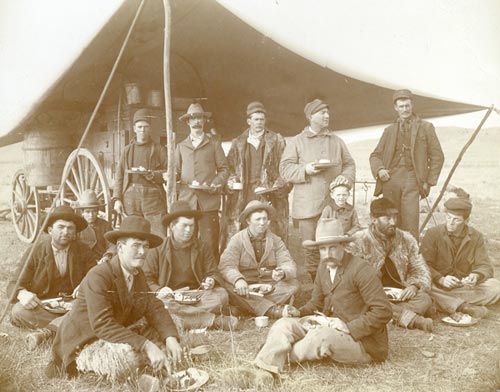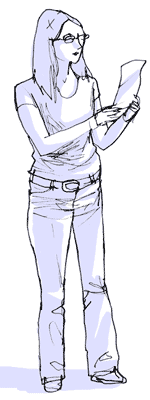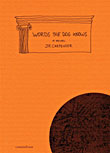the flooding-in of the real
On the flight from Montréal to Denver I watched Tickets, an Italian movie about three unrelated sets of characters traveling by train from Germany to Rome. This encouraged me - a traveling movie whilst traveling - what a good idea.
The Denver airport boasts a French Bistro. The view from Terminal C is colour-coordinated – tarmac-grey, rain-shadow parched grass, mile high cold blue sky and a thin strip of mountain – the perfect pallet for a Gore-Tex jacket. Two hours waiting for Big Sky Airlines flight 2593 to Sheridan is plenty of time to notice that tumbleweed are tossed about by the wind the same way empty Styrofoam cups are.
On the Beech 1900D every seat is a window seat. Every seat is also an isle seat. The co-pilot is also the flight attendant. There is no restroom or legroom on this plane.
There are more cattle in Wyoming than there are people. The drive from Sheridan to Ucross takes us through 27 miles of snow-dusted hills. S-curves on red-shouldered roads. It’s deer hunting season, but we see them everywhere. It’s adjective hunting season, but we can’t find enough words to describe where we are. Instead we talk about other places we’ve been, places this place reminds us of. This place reminds me of Tuscany west of Voltera. The hills there are called Poggi; they are similarly treeless and pubescent-breast shaped.
The population of Ucross is 25. The elevation is 4085. The Big Red Barn is an art gallery. The Ranch House is home to offices. We eat in the schoolhouse. We sleep in the Depot. We wake to Venetian blind sunlight lines and wonder for a moment if any of it is real. Whitetail deer graze in grasses the same green as our goose down duvets. A heard of wild turkeys forages in the cottonwoods. Perhaps we have died and gone to heaven. "Only, there must be some mistake… This appears to be the heaven for turkeys," says Karen Russell, author of St. Lucy’s Home for Girls Raised by Wolves, Knopf 2006.
"This is what travelers discover: that when you sever the links of normality and its claims, when you break off from the quotidian, it is the teapots that truly shock. Nothing is so awesomely unfamiliar as the familiar that discloses itself at the end of a journey. Nothings shakes the heart so much as meeting – far, far away – what you last met at home. Some say that travelers are informal anthropologists. But it is ontology – the investigation of the nature of being – that travelers do. Call it the flooding-in of the real." Cynthia Ozick, "The Shock of Teapots," in Metaphor & Memory, NY: Vintage, 1991, p144.
. . . . .
Labels: Ucross





